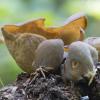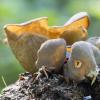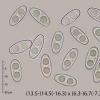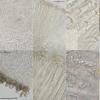
14-09-2019 18:16
 Edvin Johannesen
Edvin Johannesen
Rather large apothecia (up to 12 mm) on dead wood,

14-09-2019 21:53
 Maria Plekkenpol
Maria Plekkenpol
Holland, 07-09-2019. In riverclay area on soil (ol

12-09-2019 16:57
Hola.Un Helotial del pasado 8 de Septiembre sobre
Bluish Otidea
Enrique Rubio,
16-09-2019 21:28
Excipulum not reddish in Melzer's reactive, bright yellow in KOH (fresh material). Neither crystal-like aggregates among the hyphae of the medullary excipulum, nor striate exudates on these cells. This species is relatively common in Asturias (north of Spain) on calcareous soils of forest without conifers.
I think that the strongly yellow reaction in KOH of the fresh ectal excipulum, and the rest of the characters I have described separate it from O. caeruleopruinosa, O. bufonia and Otidea mirabilis.
What do you think?






